Gas: Cathodic Protection
High pressure steel gas pipelines are cathodically protected, and they’ll utilize what is known as a rectifier (Figures 40-41) to extend that protection down a longer length of steel pipe.
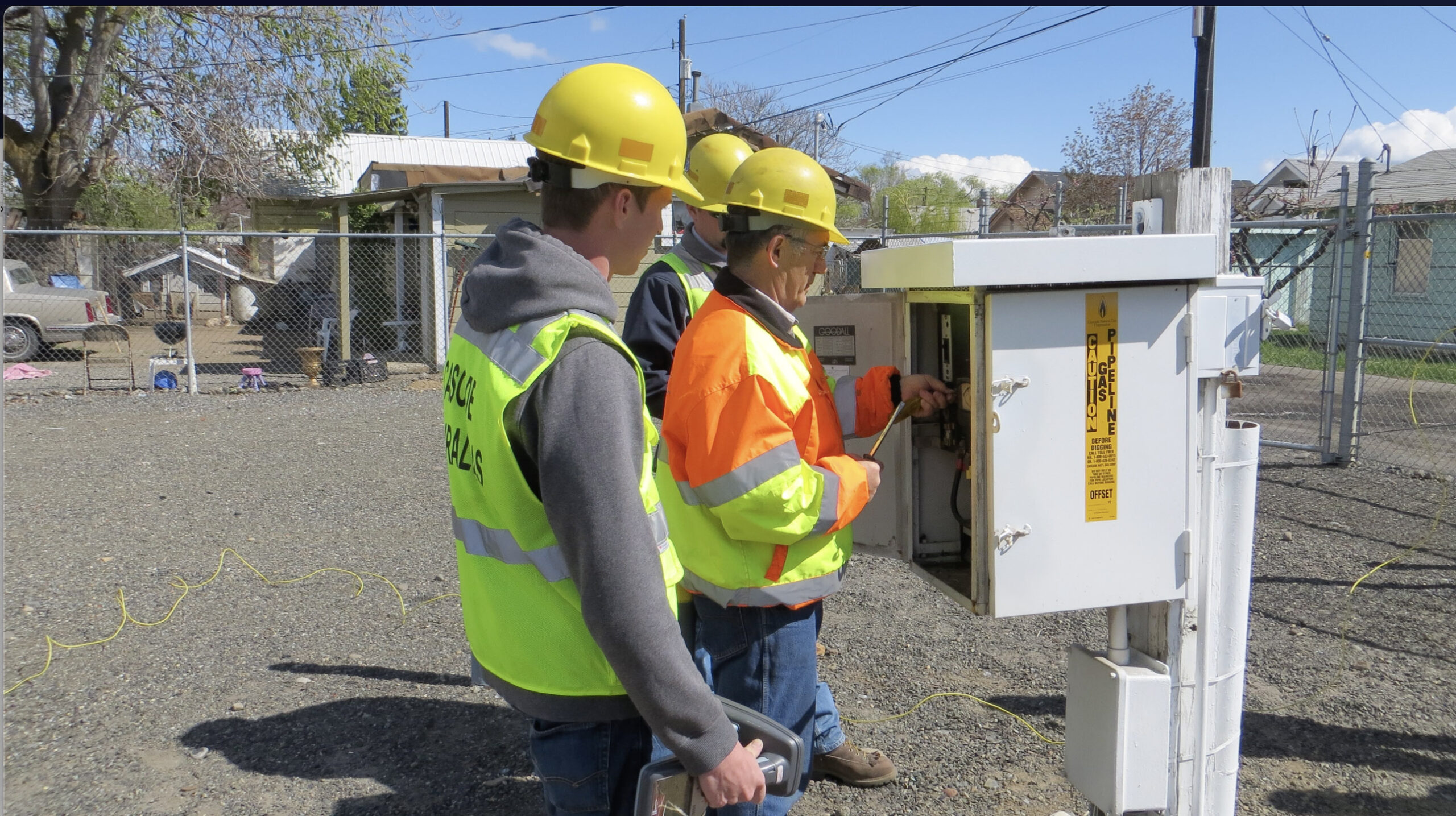
Figure 40
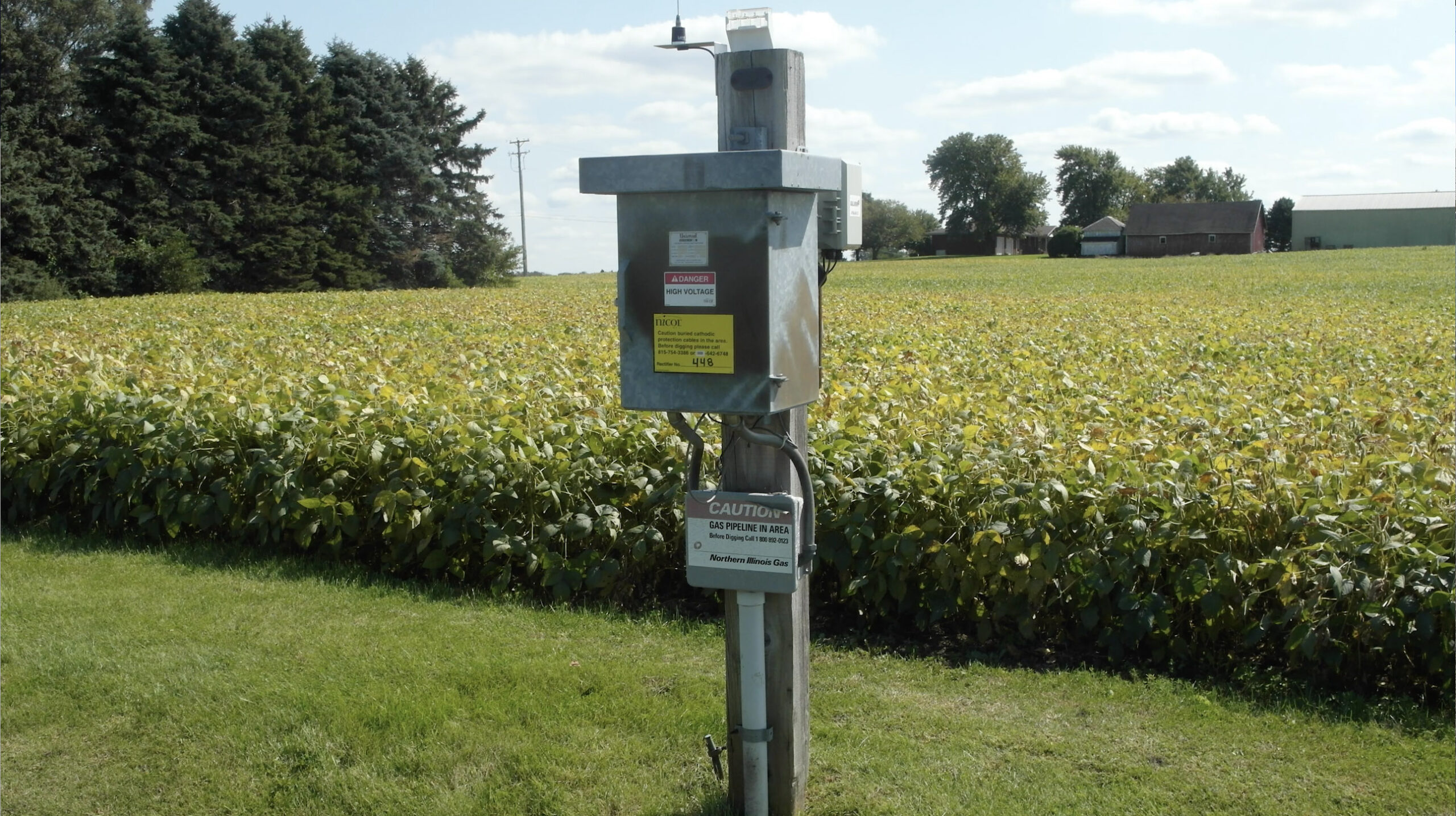
Figure 41
A rectifier is fed by alternating current from the electric utility (Figure 42). Alternating current runs in two directions, and the purpose of a rectifier is to give direction to that alternating current.
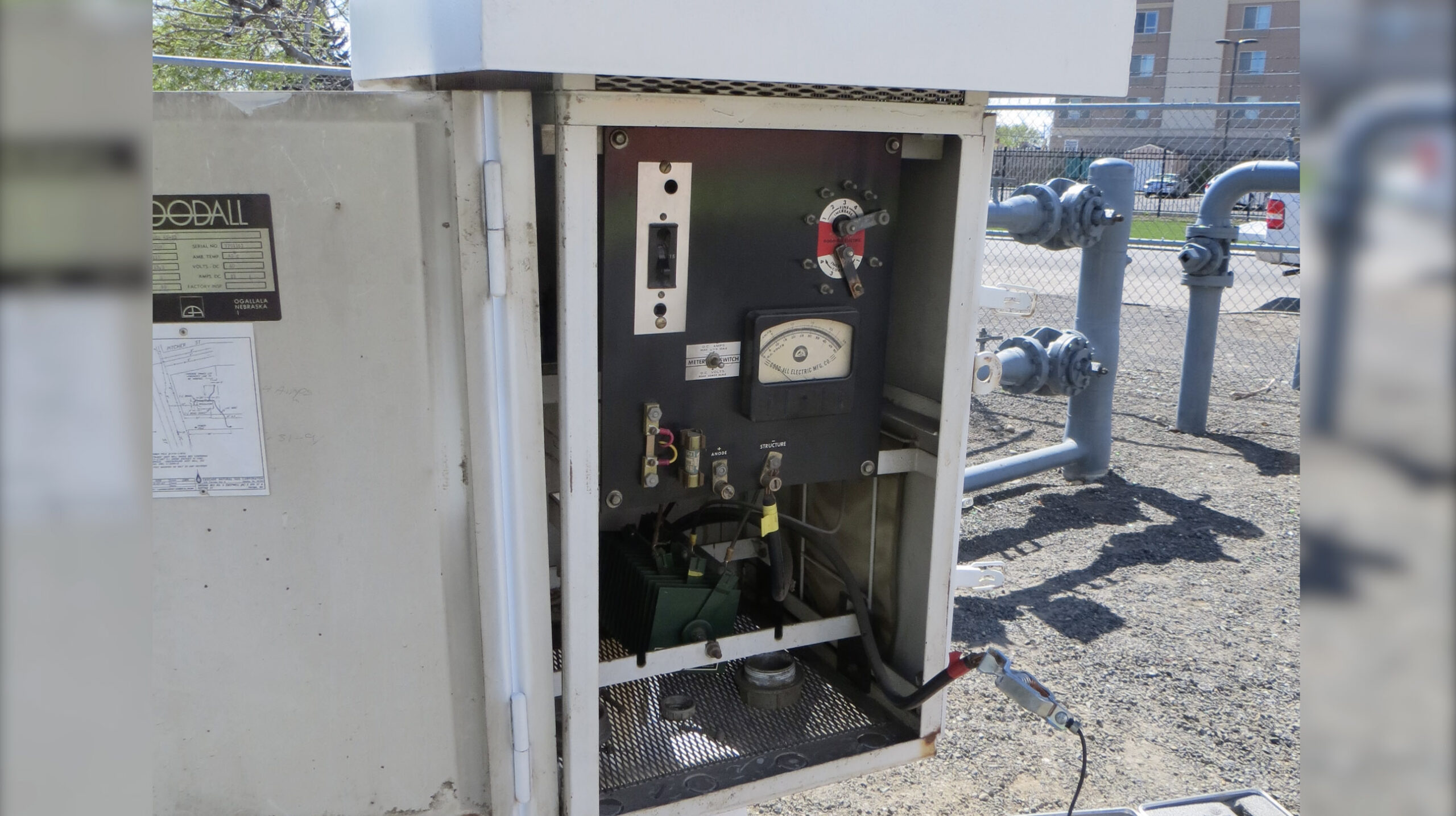
Figure 42
Leaving a rectifier, the current is called rectified AC current, which mimics DC current. Now leaving the rectifier, the electrical current acts as if it’s a one-way feed electrical current (Figure 43).
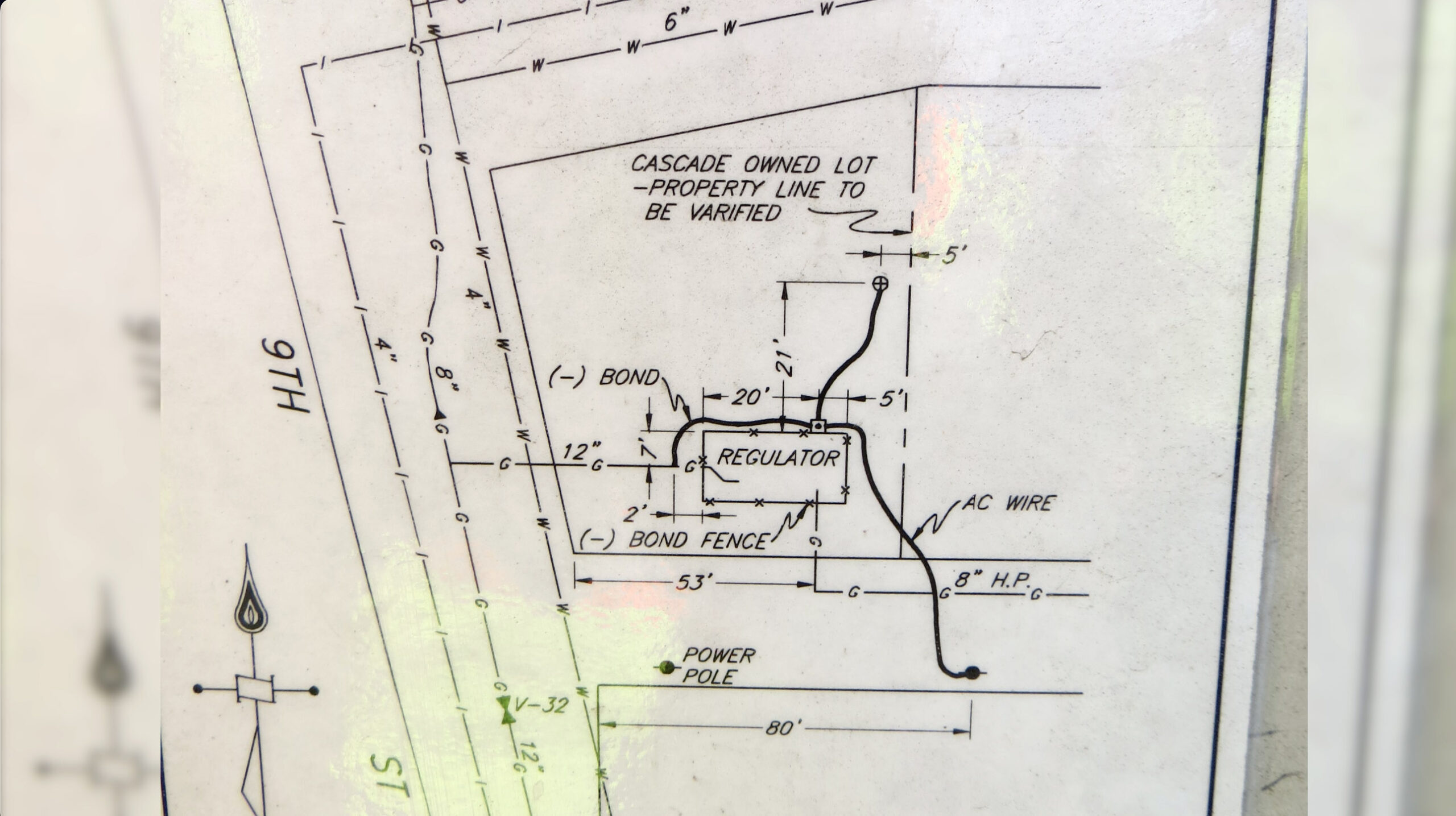
Figure 43
That rectified current is applied to a series of anodes (Figure 44). A series of anodes is known as an anode bed. The silver cylinders are the anodes (Figure 45). The bags contain a conductive carbon-based backfill and are used to cover the anodes.
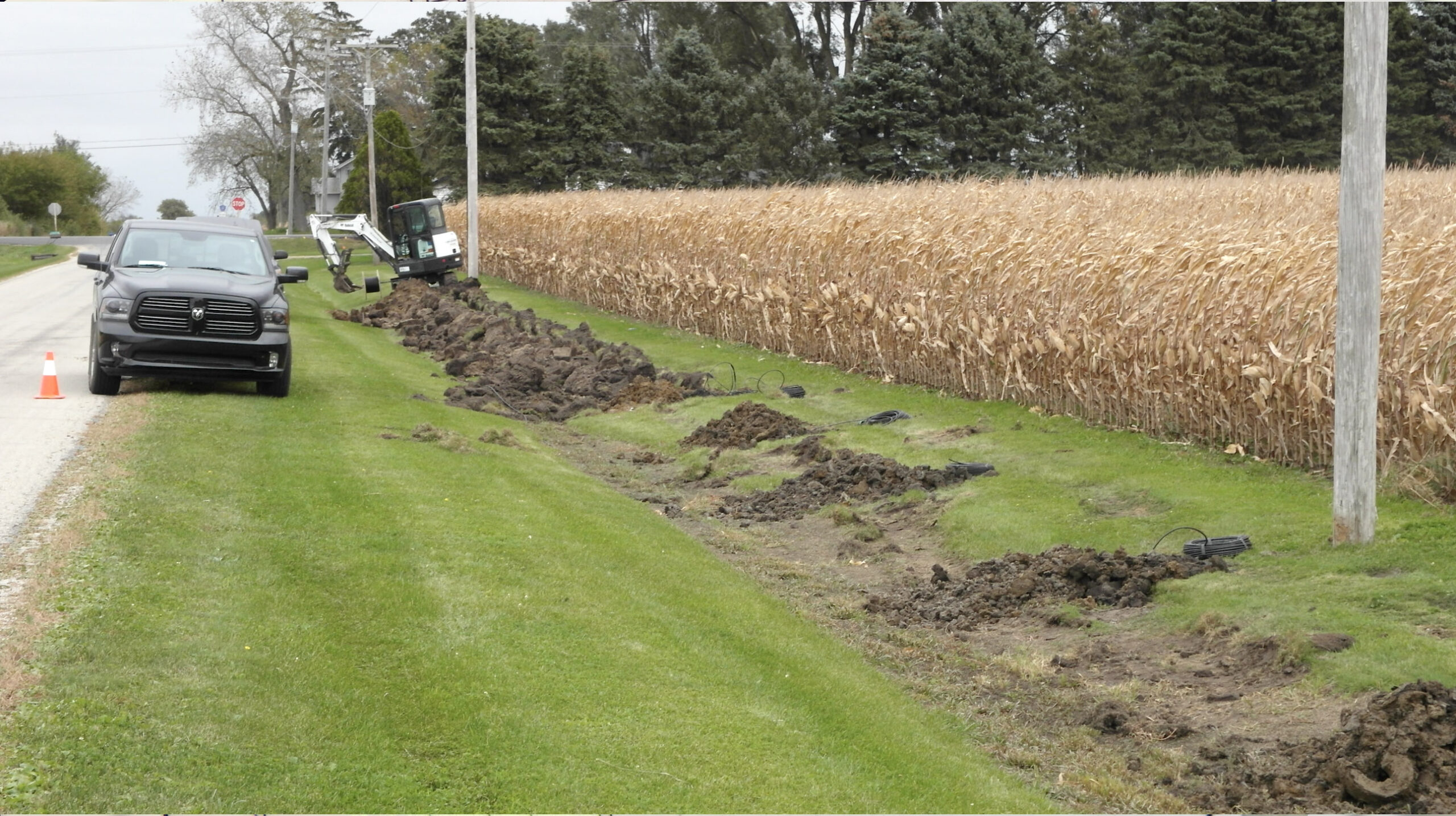
Figure 44
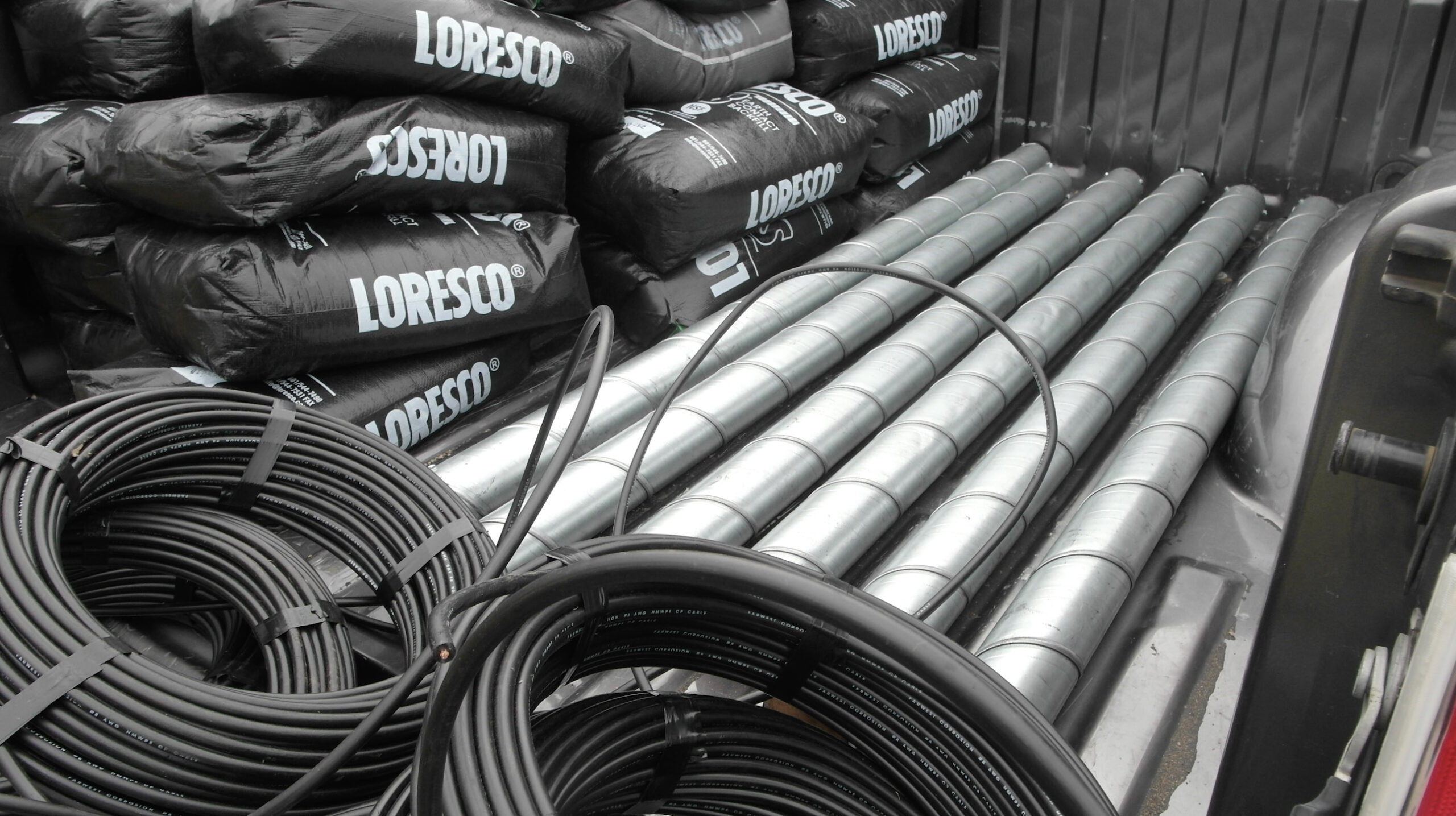
Figure 45
A wire then runs from the pipe back to the rectifier to complete the circuit (Figure 46). As long as current flows, the pipe is protected from corrosion (Figure 47).
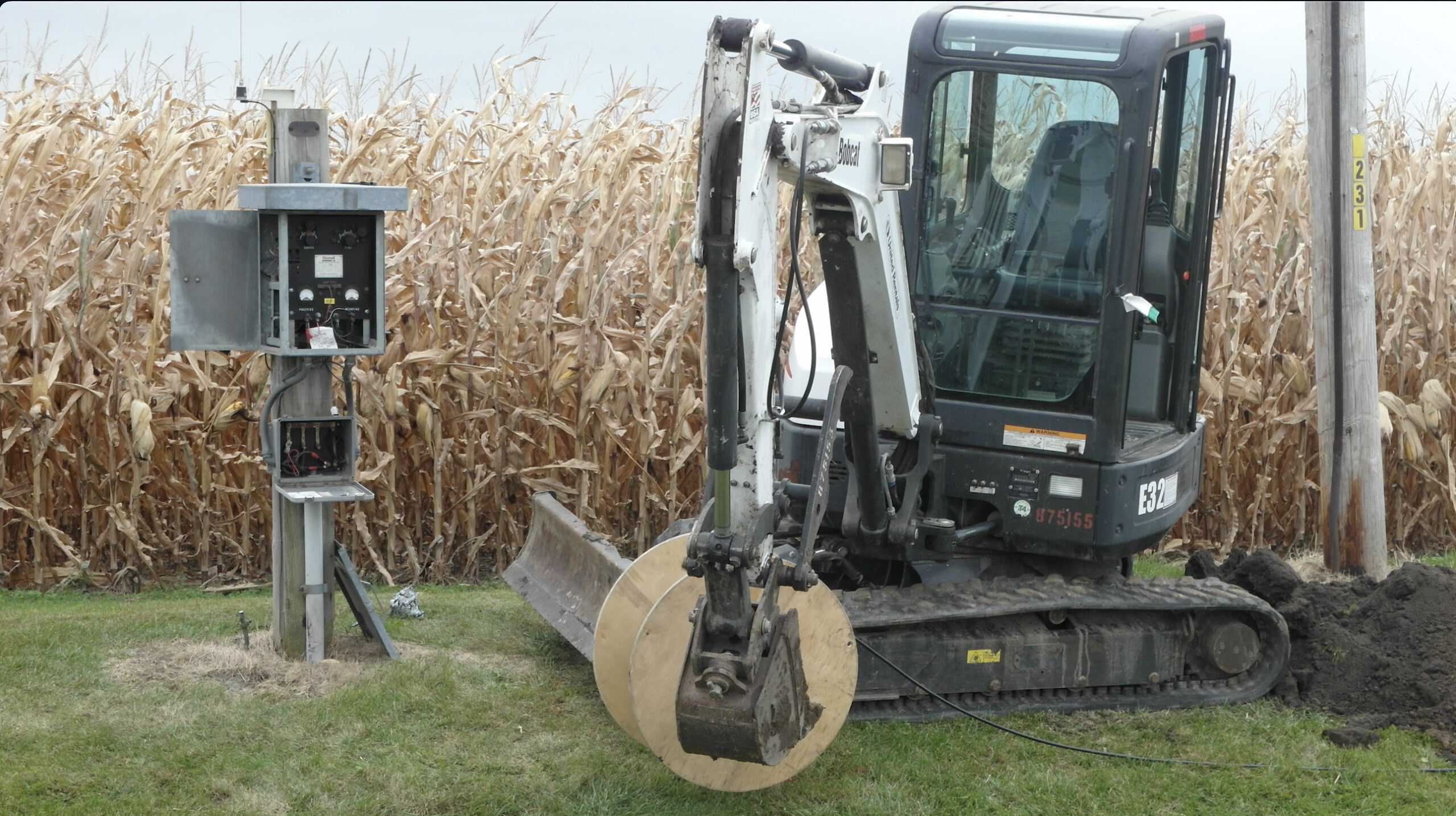
Figure 46
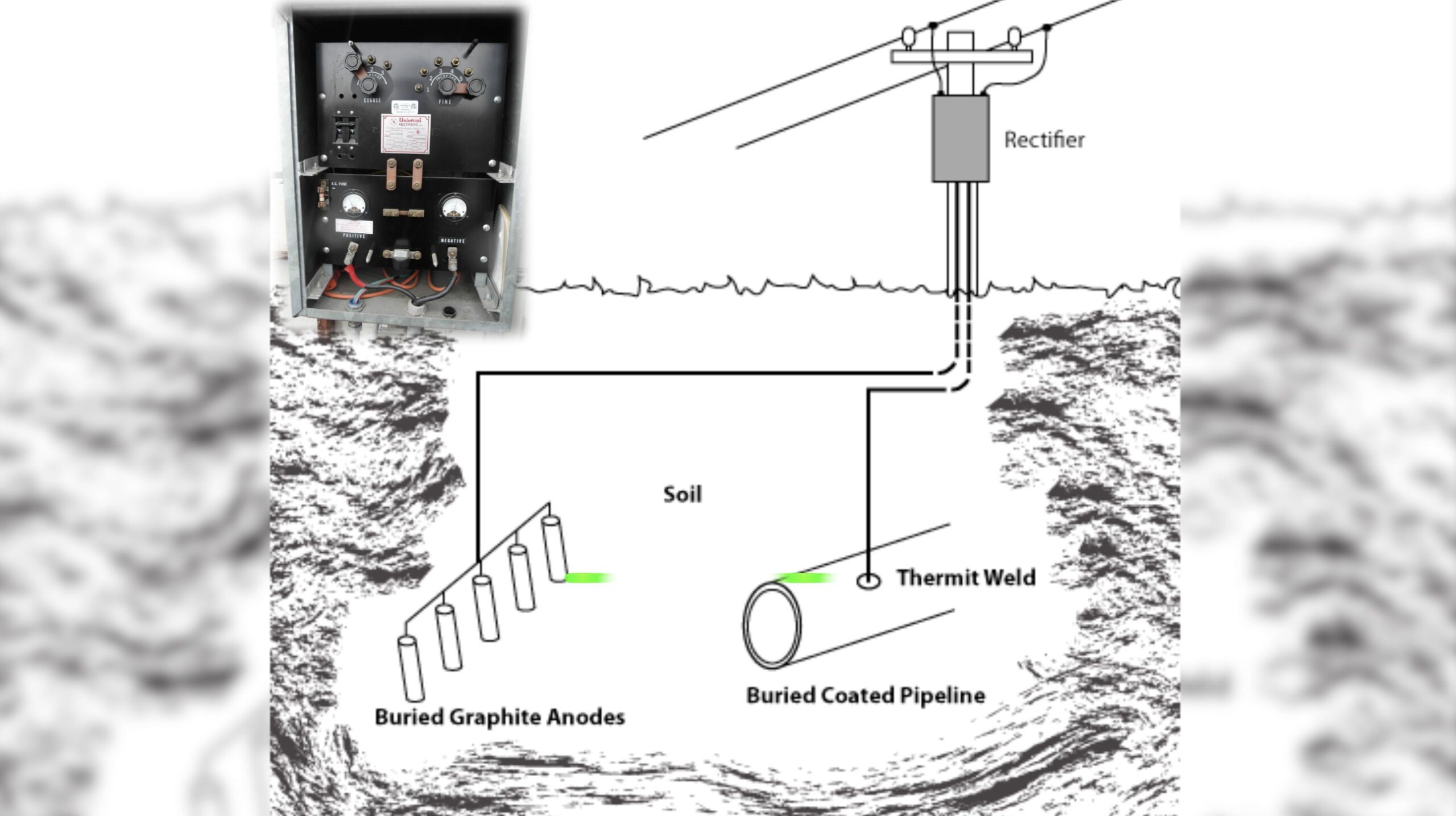
Figure 47
With that rectified current being placed on the anode bed, there is a protective current of hydrogen that travels through the soil. The circuit is completed when that hydrogen can flow to a particular part of the steel pipe, where the insulation has been damaged or is missing (Figure 48).
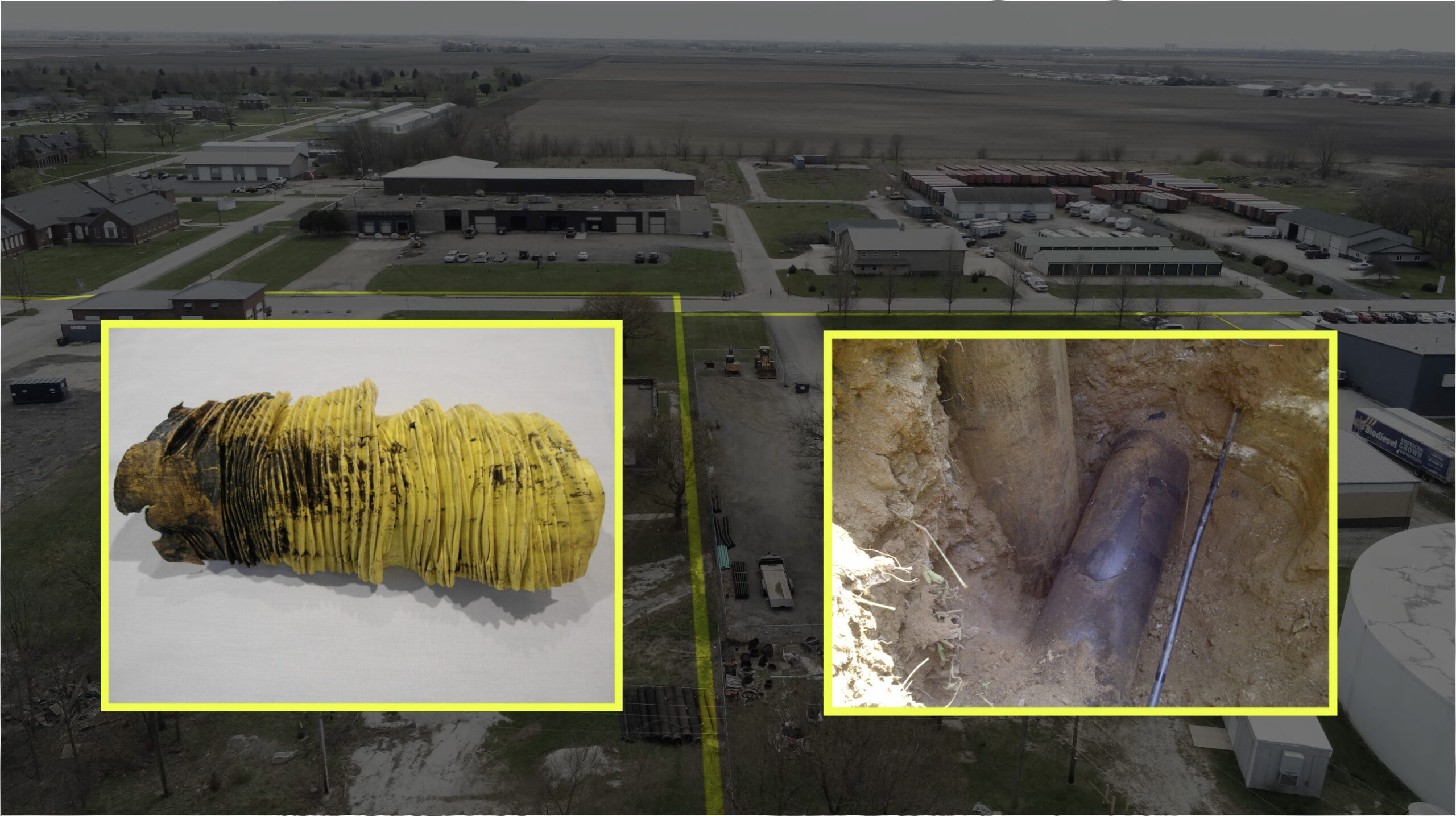
Figure 48
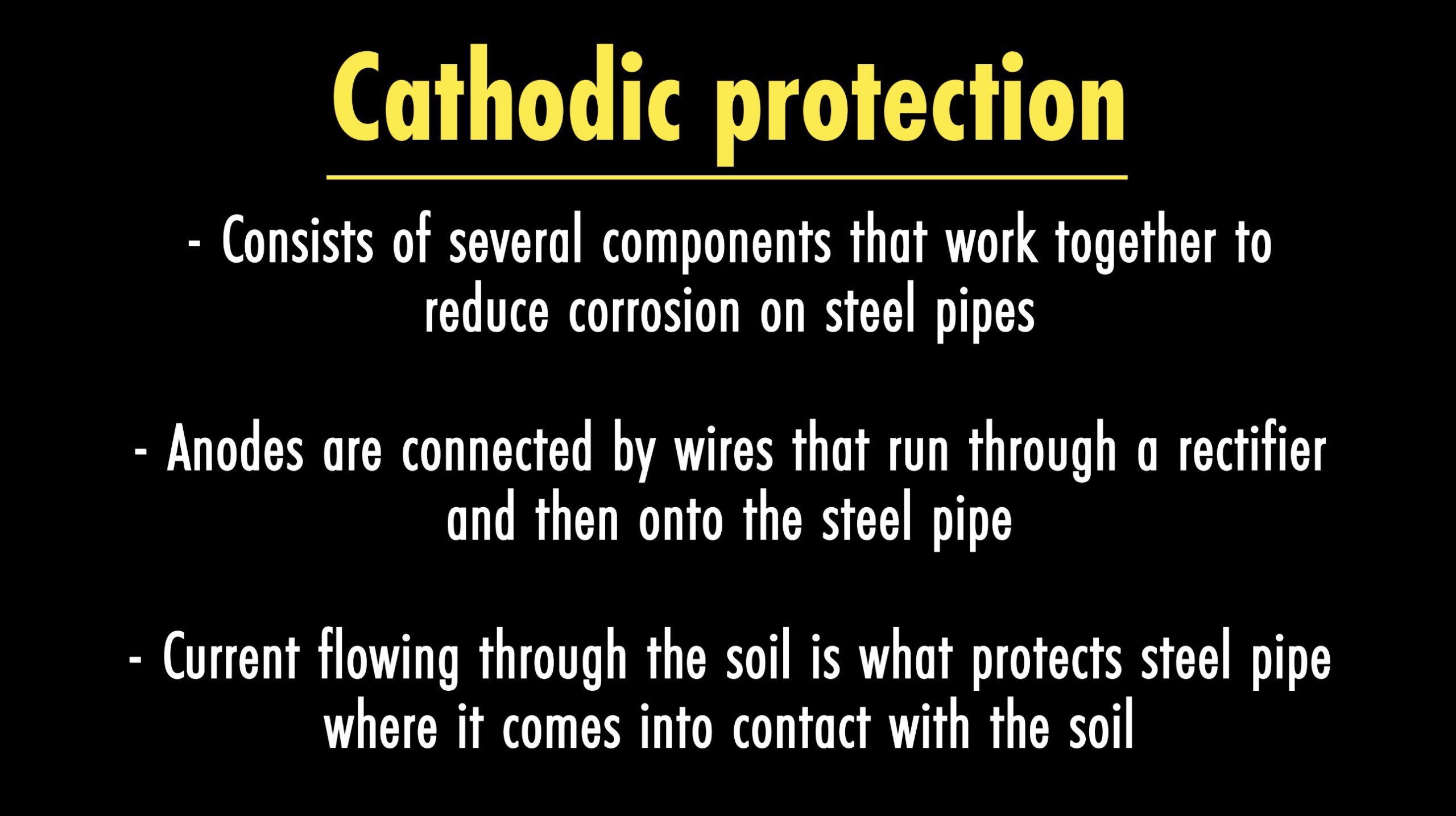
Figure 49

